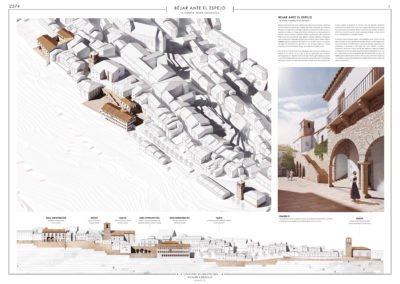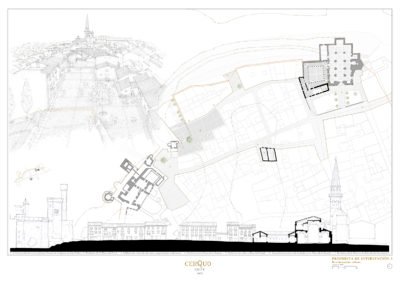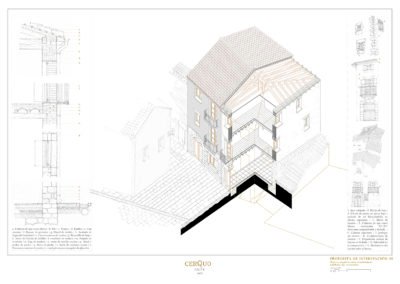The design proposals for the locations of Béjar and Olite have been selected
Madrid, 07/05/19 The Driehaus Architecture Competition is a unique and generous initiative from US financier Richard H. Driehaus, called by the Spanish Ministry of Development, aimed at recovering the Spanish architectural heritage. The three locations selected during the first phase of the Competition were Béjar, Olite and Guadix. In this second phase, 56 national and international architecture firms submitted their design proposals to respond to the needs of the municipalities. Each of the selected projects will be awarded 12,000 €.Béjar in front of the mirror
‘Béjar ante el espejo’ is the title of the winning project of architects Abelardo Linares and Elena Jiménez. The project proposes opening up the public spaces surrounding the Church of Santa María, the Jewish Museum and several buildings from the golden age of the textile industry, toward the spectacular views of the Cuerpo de Hombre river valley. Additionally, it connects the existing urban fabric in an attempt to reactivate the environment; the project includes the construction of a new residence around a patio surrounded by galleries inspired by the local tradition.Guadix
In the case of Guadix, the plan was to recover and improve the ensemble that crowns its historical center, around the Alcazaba, the old citadel. However, the jury considered that none of the proposals fulfilled all the objectives and it decided unanimously not to award the competition for this location and to include it in the call for next year.* * * *
The Phase One of the Competition for the next year has just been called, so that all the municipalities interested may enter their submissions.










Recent Comments